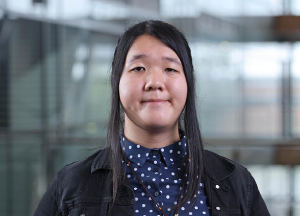
Yow-Ming (Robin) Hu, ANU
Topological electronic materials and photonic systems have attracted a great amount of interests because they exhibit robust edge states that could enable unidirectional, loss-less transport of charge carriers or photons. Topological phases in both electronic and photonic systems are typically signaled by non-zero values of certain topological invariants in the band structure [1].
Recently, the study of topological effects was generalized to open dissipative systems described by non-Hermitian Hamiltonians, which lead to a wide range of effects such as coherent-perfect absorption and lasing, directional emission, as well as novel topological invariants and edge states [2]. A hybrid light-matter system of microcavity exciton polaritons, which arise from the strong coupling of excitons in a semiconductor and cavity photon modes, represents an accessible platform for studies of non-Hermitian effects, including the novel topology.
Previous work has demonstrated that the exciton polaritons can be used to experimentally measure a quantity called the quantum geometric tensor [3,4]. The quantum geometric tensor is a complex-valued tensor. Its imaginary component corresponds to a topological effective magnetic field in momentum space known as the Berry curvature, and its real part is the quantum metric tensor that defines the distance between two quantum states [5].
Recently, this quantum geometric tensor has been generalized to non-Hermitian systems [6-8]. Due to the bi-orthogonal left and right eigenvectors of the non-Hermitian systems [2], there exist two different ways to define components of the generalized quantum geometric tensor. One is defined using only the right eigenvector (which we denote as RR) [6,7], while the other is defined using both the left and right eigenstates (which we denote as LR) [8]. However, only the RR Berry curvature [6] and quantum metric [7] have been experimentally measured so far.
In this work, we calculate the components of the two generalized quantum geometric tensors in an exciton-polariton system. We also extend the formalism presented in Ref. [3] and show that the LR generalizations of the quantum geometric tensor can be experimentally measured. Our results suggest further directions for exploring non-Hermitian topology using exciton polaritons.
- T. Senthil, Annu. Rev. Condens. Matter Phys. 6, 299 – 324 (2015)
- Åž. K. Özdemir et al., Nat. Mater. 18, 783 – 798 (2019)
- O. Bleu et al., Phys. Rev. B 97, 195422 (2018)
- A. Gianfrate et al., Nature 578, 381 – 385 (2020)
- J. Provost and G. Vallee, Commun. Math. Phys. 76, 289 – 301 (1980)
- J. Cuerda et al., arXiv e-prints arXiv:2305.13174 (2023)
- Q. Liao et al., Phys. Rev. Lett. 127, 107402 (2021)
- D.-J. Zhang et al., Phys. Rev. A 99, 042104 (2019)
About the presenter
Yow-Ming (Robin) Hu is a PhD student working with Chief Investigator Elena Ostrovskaya. Her project aims to characterise the topology of an exciton-polariton system and to show how to calculate and measure its quantum geometric tensor, including complex Berry curvature. This works towards a key objective of FLEET Research Theme 2 Exciton Superfluids to observe, theoretically and experimentally, topologically protected states in an exciton-polariton system.
